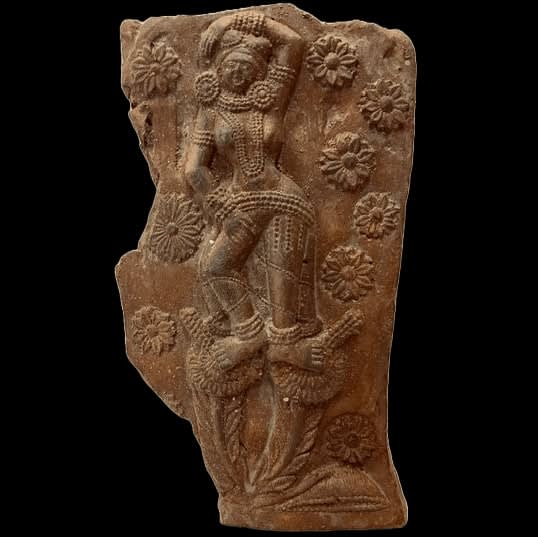Shunga Plaque depicting a Goddess, possibly Chandraketugarh, Second Century BC - First Century BC
Terracotta
16.5 x 8.9 cm
6 1/2 x 3 1/2 in
6 1/2 x 3 1/2 in
RP.051
Around 185 B.C., Pushyamitra Shunga, the principal military officer of the last Mauryan king, assassinated his ruler and assumed control. Because the Shungas were the successors to the Mauryans, the...
Around 185 B.C., Pushyamitra Shunga, the principal military officer of the last Mauryan king, assassinated his ruler and assumed control. Because the Shungas were the successors to the Mauryans, the period following Mauryan rule is often called the Shunga period. However, except at the beginning, Shunga was not as extensive as the earlier realm but coexisted with other polities throughout the subcontinent. The period saw a flowering of the visual arts, including small terracotta images, larger stone sculptures, and architectural monuments such as the chaitya hall at Bhaja, the stupa at Bharhut, and the renowned Great Stupa at Sanchi. Under Shunga patronage, the core of the Great Stupa, thought to date from the era of the Mauryan emperor Ashoka (r. ca. 273–232 B.C.), was enlarged to its present diameter of 120 feet, covered with a stone casing, topped with a balcony and umbrella, and encircled with a stone railing. Four famous gateways, each about thirty-five feet high, were carved during the first half of the first century A.D. Decorated with images of auspicious fertility spirits, known as yakshas and yakshis, the gateways also feature narratives depicting moments from the past lives and final existence of Siddhartha Gautama, the founder of Buddhism. Motifs such as wheels, thrones, and footprints are used to symbolize the Buddha, who is not represented in human form until later.
